A charge Q is placed at the centre of a spherical conducting shell. Choose the correct option.
Only −Q will appear on its inner surface
Only +Q will appear on its outer surface
A charge −Q will appear on its surface and +Q on its outer surface
A charge +Q will appear on its inner surface and −Q on its outer surface
The correct Answer is:3
Step by step video, text & image solution for A charge Q is placed at the centre of a spherical conducting shell. Choose the correct option. by Physics experts to help you in doubts & scoring excellent marks in Class 12 exams.
Updated on:21/07/2023Topper's Solved these Questions
Similar Questions
A point charge Q is placed at the centre of a spherical conducting shell. A total charge of -q is placed on the shell. The magnitude of the electric field at point P1 at a distance R1 from the centre is X. The magnitude of the electric field due to induced charges at point P2 a distance R2 from the centre is Y. The values of X and Y are respectively.
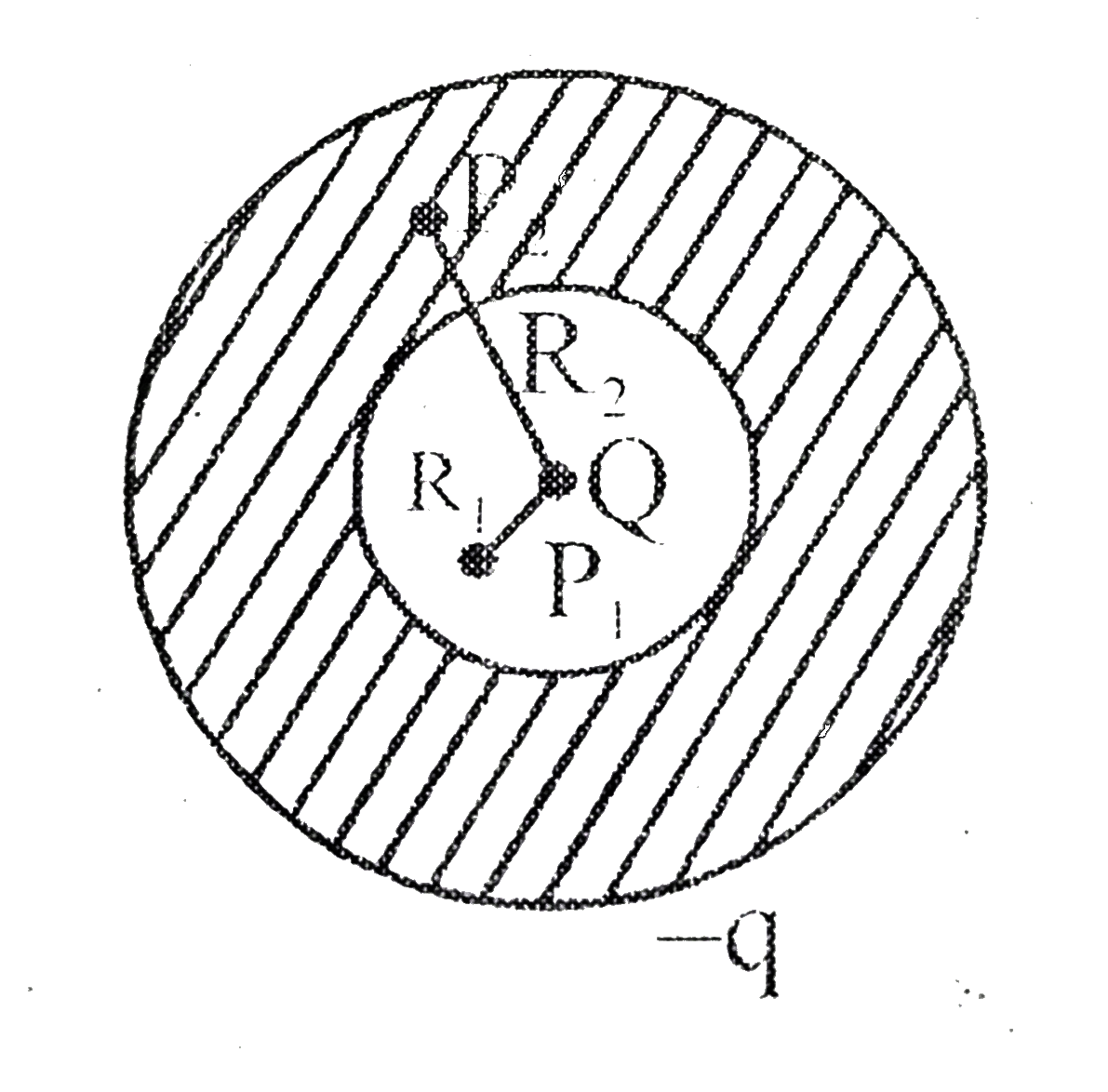
View Solution[" An charge "q_(1)" is placed at the centre of a spherical conducting shell of radius "R" ."],[" Conducting shell has a total charge "q_(2)" .Electrostatic potential energy of the "],[" system is "]
View Solution
Knowledge Check
In a Van De Graff generator , when a positively charged spherical conductor placed at the center of a spherical conducting shell is connected by a wire to the shell , all the charge flow to the conducting shell. What will happen if the inner conducting sphere has a negative charge ?
AThe charge will still flow from the inner sphere to the conducting shell as inner sphere is still at higher potentialBThe charge will still flow from the inner sphere to the conducting shell as inner sphere is now at lower potentialCCharge will now flow from outer shell to the inner sphereDNo charge will flow nowA conducting sphere that carries a total charge of -3q is placed at the centre of a conducting spherical shell that carries a total charged of +5q. The conductors are in electrostatic equilibrium. The charges on the inner and outer surfaces of the shell are respectively.
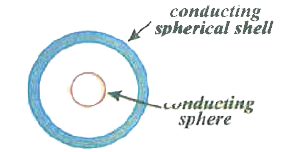 A+3q,+2qB+q,+qC+2q,+3qD+2q,+7q
A+3q,+2qB+q,+qC+2q,+3qD+2q,+7qA point charge q is placed with in the cavity of an electrically neutral conducting shell whose outer surface has spherical shape. Then,
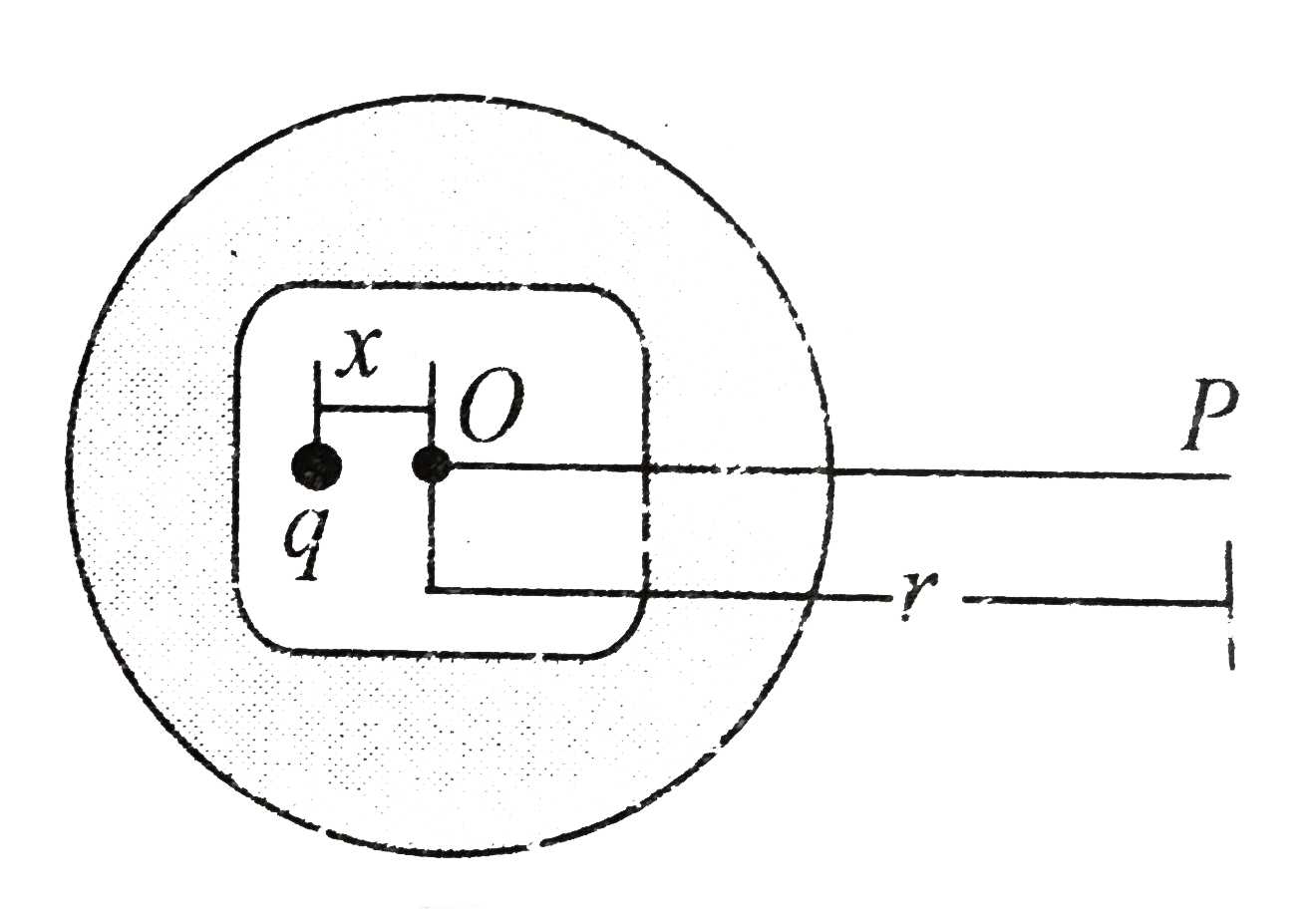 AThe potential V at point P lying outside the shell at a distance r from the centre O of the outer surface depends upon the value of x.Bpotential at P does not depend upon the value of x.Ca total charge q will be induced on the outer surface the shell which will be distributed uniformly on the outer surface.Da total charge -q will be induced on the inner surface of the shell which will be distributed nonuniformly on the inner surface.
AThe potential V at point P lying outside the shell at a distance r from the centre O of the outer surface depends upon the value of x.Bpotential at P does not depend upon the value of x.Ca total charge q will be induced on the outer surface the shell which will be distributed uniformly on the outer surface.Da total charge -q will be induced on the inner surface of the shell which will be distributed nonuniformly on the inner surface.
A charge q is placed at a distance of 2R from the centre of a spherical conducting shell of radius R. What is electrical potential, due to charges induced on the shell, at a point which is farthest from the point charge ?
View SolutionA point charge +Q is placed at the centre of an isolated conducting shell of radius R. Find the electrostatic potential energy stored outside the spherical shell if the shell also contains charge +Q distributed uniformly over it.
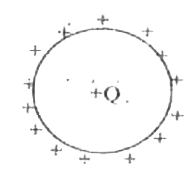
View Solution(a) A charge +Q is placed on a large spherical conducting shell of radius R. Another small conducting sphere of radius r carrying charge 'q' is introduced inside the large shell and is placed at its centre. Find the potential difference between two points, one lying on the sphere and the other on the shell.
(b) How would the charge between the two flow if they are connected by a conducting wire ? Name the device which works on this fact.
View SolutionA charge q is placed at the centre of an imaginary spherical surface. What will be the electric flux due to this charge through any half of the sphere.
View SolutionShown in the figure a spherical shell with an inner radius 'a' and an outer radius 'b' is made of conducting metarial. A charge +Q is placed at the centre of the spherical shell and a total charge -q s placed on the shell. Charge -q is districuted on the surfaces as :
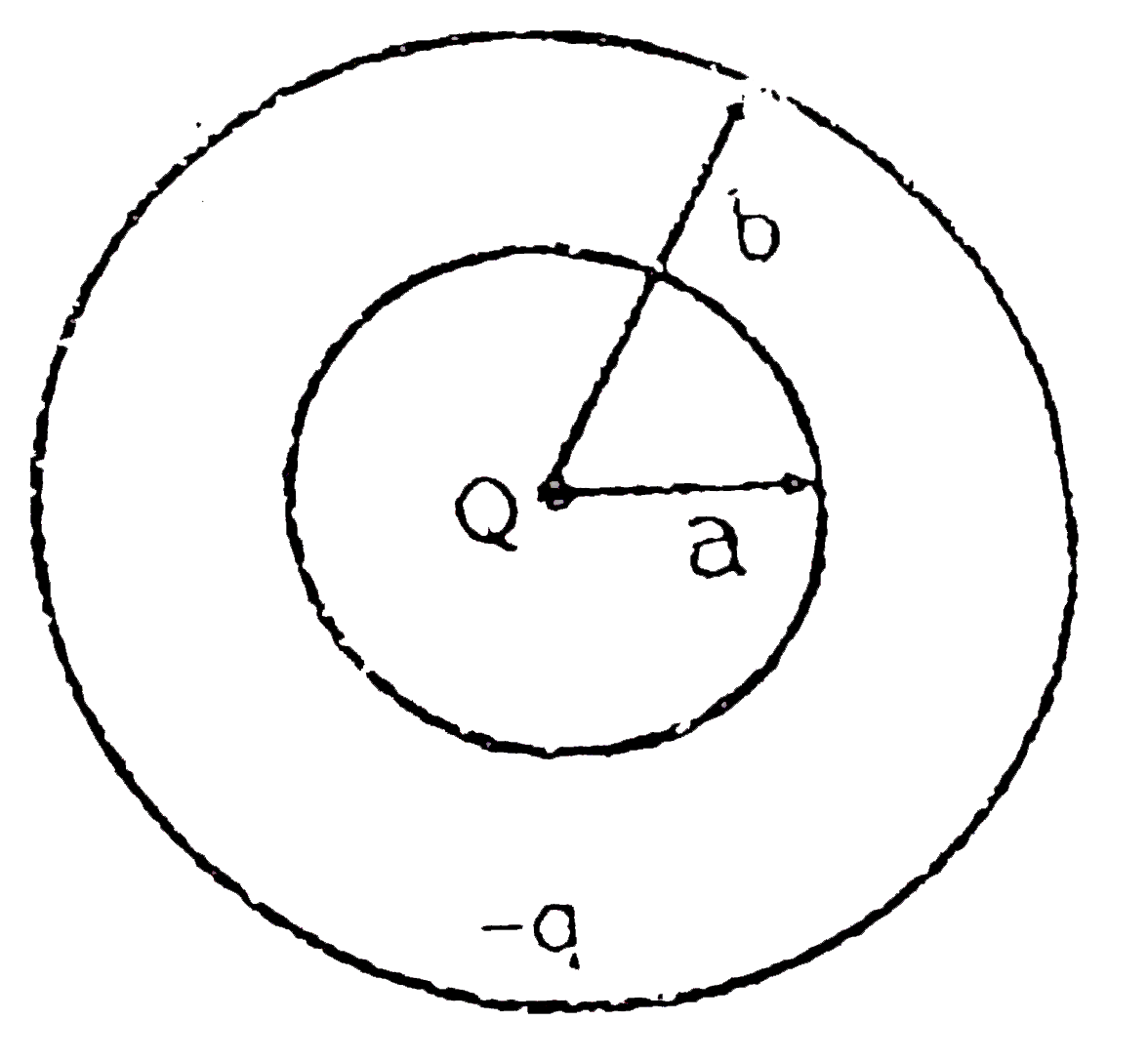
View Solution

